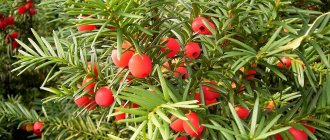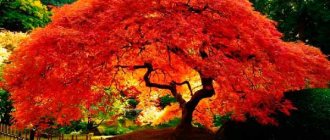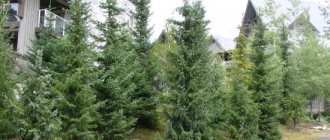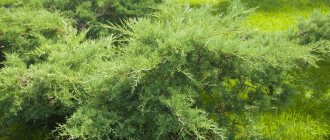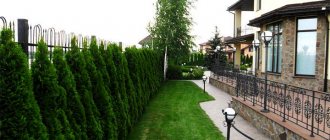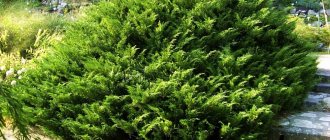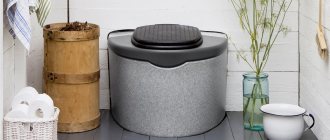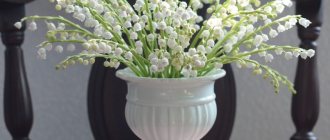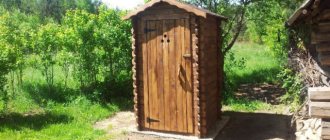Modern species of junipers (Juniperus) amaze with their diversity, from size to color of needles. The plant can be a bush, barely rising to 15-20 cm above the ground, and a tree up to 30 meters in height. These representatives of the plant world are among the old-timers, because their age is 50 million years!
There are more than a hundred species and varieties of this crop. In our country, junipers are grown, which are winter-hardy and undemanding to soil. Which type of plant among the variety to choose for your garden? In this article we will look at the main varieties of junipers.
Common juniper
Common juniper grows as a spreading shrub or tall tree and has a crown of various shapes. The species is resistant to dust and gas pollution, so it is often planted in cities. Grows on rocky soils and sandy loams. The varieties of common juniper are listed below.
Juniperus communis species
The species has a wide distribution range: it is found under natural conditions in forests in the north and center of Europe, the Siberian region, eastern Asia, northern America and northern Africa. The plant grows very slowly, gradually turning into a tall shrub or tree. The needle-shaped needles of a green hue are covered with a coating of wax.
The fruits (cones) are round in shape, black in color, covered with a waxy bluish coating.
Juniper Arnold
The height of this compact shrub reaches 3 meters. It grows very slowly. The crown is represented by a narrow, up to 60 cm, column. Coniferous paws have a bluish green color.
Juniper Compressa
Belongs to dwarf varieties. The bush grows up to 80-100 cm. The crown is very dense, up to 30 cm wide, and forms a column shape. Coniferous branches have a very light, greenish tone.
Variety Golden Showers
The shrub grows very slowly, the height of an adult bush is no more than 1 m. In winter and spring, the needles are golden-yellow in color, during the rest of the year they become golden-green.
Juniper Green Carpet
A creeping shrub is only 10-15 cm high, and the crown spreads in diameter up to 1.7–2 m. It grows very slowly, the needles are soft, green in shades.
Variety Hornibrookii
The plant is classified as a slow-growing creeping species, growing up to 30-45 cm. The crown is up to 2-3 meters wide. The green needles are decorated with silver stripes.
Juniper Meyer
An adult bush has a height of 3 m, a diameter of 1.5 m, and grows very quickly. Has several trunks. Coniferous paws are green, with a bluish tint.
Juniper Repanda
The variety is classified as creeping, the branches rise to a height of 40 cm, but the bush spreads up to 2.5 meters. The paws are dark green, with silver stripes on top; in the winter months the needles turn green with a brown tint.
Juniper Suecica Aurea
The bush grows slowly, reaching a height of 3 meters. The dense columnar crown is decorated with yellow-green coniferous paws; in winter they turn yellow-brown.
Solid
The variety naturally grows on rocky terrain.
The species is also called rigid, Juniperus rigida. At the age of 30 it grows 6.5 m upward, the trunk circumference is 10 cm. Juniper grows slowly, is frost-resistant, light-loving, and has little demand for soil. The variety naturally grows on rocky terrain. Wood is not subject to rotting processes.
The shape of the aboveground part is columnar, oval or narrow pyramidal. The branches are triangular, directed upward, then become prostrate. Young shoots hang down. The bark is first grayish, then reddish-brown, furrowed. The leaves are hard, dense, sharp, prickly, yellowish-green. Juniper cones are round, small, black and blue, covered with a blue coating, and ripen in the second year of cultivation.
Red cedar
Now let's look at the varieties of juniper virginiana. The crop is found in both upright trees and creeping and horizontally standing shrubs. Plants have crowns of different shapes and different colors of needles. Almost all varieties are winter-hardy, tolerate dry summers and planting in partial shade, without high claims on the composition of the soil.
The advantage of this species is its developed root system; the plant grasps any soil with its lateral shoots.
Juniperus virginiana variety
This North American variety has been in cultivation for 356 years. As the needles grow older, they gradually degenerate from needles into scales. But the lower branches remain needle-shaped. The fruits are black, with a blue tint, and round in shape.
Juniper J.pfitzeriana Hetzii
Very beautiful, up to 3 meters in height, with gray-blue needles, shrub. The diameter of the spreading crown is more than 3 m. By winter, the needles acquire a brown tint.
Variety Gray Owl (gray owl)
When the plant reaches the age of 10 years, its height will be about 1.5 meters, but the bush will spread 3-4 meters. The color of the needles is grayish, with blue or green tints; in the winter months, the coniferous legs become blue, with a bronze tint.
Application in landscape design
Photos of areas decorated with plantings of any variety of Cossack juniper allow us to conclude that it is the most effective plant for any type of terrain. In the description of the design subtleties of design, this plant appears as the main species for areas with elevation differences.
Various varieties of juniper look great both in single and group plantings. They are combined with almost any planting, perfectly highlight stone fences, and are used to decorate alpine slides and rockeries.
The versatility of this plant lies in the fact that it fits organically into compositions of various styles. The main thing is to choose the right variety.
- In Scandinavian-style design, strict lines and rocky spaces are ideally emphasized by varieties with yellow-green or golden needles, which look impressive against the backdrop of heather and moss.
- Compositions in the style of strict English gardens are perfectly complemented by noble junipers with bluish, gray-green needles.
- In Japanese-themed gardens, strict-shaped junipers are planted against a backdrop of bright flower arrangements and shrubs. They look good near rocky islands, next to thickets of colorful heathers.
Plantings of junipers alone, even of different varieties, look somewhat dull; their beauty is emphasized by bright perennials or shrubs. A spreading juniper bush is conveniently located among a smooth green lawn. Rocky transitions and decoration with ornamental grasses will help to harmoniously combine junipers with large deciduous trees or flowering flower beds.
In addition to aesthetic beauty, juniper significantly improves the ecological situation of the site. Its phytoncides purify the air and have a beneficial effect on the respiratory system. It is recommended to plant these plants near terraces and other recreation areas.
Juniper horizontal
This species is represented by a shrub with creeping flexible shoots and a lot of small lateral branches. The needles have a bluish-green or green color. The type of needles are scales or needles that turn burgundy in color during the winter months. Based on the species, geneticists have developed 60 varieties.
Variety Juniperus horizontalis
A shrub that spreads along the surface of the ground with long branches. The needles are found both in scaly form and in the form of needles. The fruits are black, spherical in shape.
Juniper Agnieszka
Dwarf bush from Poland. It does not grow higher than 30 cm, spreading out to the sides up to one and a half meters. The bluish-green needles are small, and after the first frost they turn lilac.
Juniper Golden Carpet
The bushes grow very slowly, their height is only 10-20 cm, and their diameter is up to one meter. The needles are yellow in color and small in size, most often needle-shaped. The crown is flat, the side branches are shortened and directed upward.
Juniper horizontal Gray Pearl
The variety differs from others in its shoots, which reach 40 cm in height and grow vertically. It spreads on the ground up to 1.7 m. Coniferous paws are painted bronze in winter, bluish-gray during the rest of the year, sometimes the plant is found with blue-green needles.
Juniper Icee Blue
The variety is dwarf, grows up to 10 cm, spreads over the surface up to 2 m. Coniferous paws of silver-blue color form a dense crown.
Juniper Wiltonii
The plant covers any surface with a dense carpet, its height is up to 20 cm. The branches form a dense crown, and over time the branches are layered on top of each other. Type of needles: needles of a bluish-silver hue. The variety is very unpretentious, but the plant grows slowly! Many gardeners plant this juniper on the roof for landscaping.
We recommend studying: the best frost-resistant ground cover perennials for your dacha
Reproduction methods
There are several methods of propagation for juniper - cuttings, seeds and layering. As we wrote above, describing one of the juniper varieties, propagation by seeds is a very long and rather complex process. But nevertheless, some gardeners take on this difficult task.
You can grow a full-fledged healthy plant from a seed, but the germination rate of juniper seeds is extremely low. For the seeds of this plant, the same pre-planting preparation is carried out as for most vegetables. It is advisable to first check the seeds for the presence of nutrients inside by immersing them in water. Empty seeds will float to the surface of the water. Seeds can be soaked in specialized liquid stimulants and sprinkled with a layer of soil up to one centimeter. Thus, the seeds find themselves in conditions under which the seeds must “wake up”.
You can plant seeds throughout the fall; this time is considered to be the best. Those who plant seeds in the spring need to stratify in the fall. Seeds should be planted densely. The first shoots appear approximately in the second or third year after planting. Young plants require careful care and close attention. The soil must be constantly loosened and covered with mulch; during the first winter, young plants should be covered.
An easier way is propagation by cuttings. In the spring, cuttings are taken from an adult plant. The length of the cutting should be about 8-10 cm and have a “heel”, that is, a piece from the main stem or a piece of old bark. The cuttings are left in water with a stimulant for a day. The next day they are planted in the sand, and when roots appear on the cuttings, they are transplanted to a permanent place in the ground.
The easiest way is to propagate juniper using layering. And it is also the simplest because the juniper branches, spreading along the ground, independently take root, thereby forming juniper thickets.
To help the branches take root, gardeners artificially press the branches to the ground, add and loosen the soil, and apply fertilizers. The branches need about a year to fully take root without outside help. During this time, the plant must be watered and the soil loosened. As soon as new young vertical branches appear on the rooted branch, it can be cut off from the mother bush.
Juniper dahurian
It grows slowly. Skeletal branches are located horizontally, rising up to 1 meter in height. Green needles are needle-shaped. The tips of young growths are scaly and very soft. In winter the plant turns olive green. The fruits are bluish in color, with a bluish coating.
Cossack juniper (Glauca)
In nature, it can be found in the Caucasus, Crimea, Mongolia, in the center and west of Europe. Shrubs grow up to 1-2 m, with a diameter of 2 to 5 m. Varieties of this species are rarely found as upright bushes or trees. The gray-green needles are interesting with splashes of cream color.
The shrub spreads as a carpet up to 2 meters, but does not grow higher than 30 cm. The color of the needles is found in both blue-gray and blue-green. Used in landscapes for heather parks and stone slides.
Pests and diseases
The presence of poisonous essential oil, which gives the plant a specific smell, drives away harmful insects. But this does not interfere with fungal and bacterial diseases. Although Cossack juniper is considered the most resistant of its kind, it is susceptible to some diseases.
- Net rust can attack junipers that grow near an orchard. This disease is characteristic of trees of Rosaceae crops. On the affected stems of the plant, small brown capsules form, from which, when cracked, a fine powder spills out - spores of the fungus that causes the disease. With further spread, the disease causes the branches and needles to dry out. The disease is chronic and subsides somewhat after treatment with fungicides. If cracks and small tubercles are detected, damaged branches should be removed immediately and the bush should be treated with a special product. Repeat spraying after 2 weeks.
- Fusarium is a fungal disease of roots. The insidiousness of the disease is that its initial stages occur underground, unnoticeably. The appearance of the plant changes when a significant part of the rhizome is already affected. At the same time, the needles from the lower branches begin to turn yellow and fall off, and the bush gradually dries out. At the first signs of wilting, you need to cultivate the soil around the bush. If the plant cannot be saved, it should be immediately removed, burned and the area where it grows is soaked with a fungicide.
- Brown schottie is also caused by a fungal pathogen that develops in winter or in conditions of excessive humidity. The affected needles turn yellow under a gray-brown web, which becomes blacker and sticky over time. The fight against the disease is treatment with Bordeaux mixture or drugs with a similar effect.
- Biatorella canker occurs when a fungus settles at the site of damage to the branch, which causes necrosis of the bark. With further spread, ulcers appear on the bark, it darkens and dries out. The best way to combat this disease is prevention. Mechanical damage, places where branches are cut and broken should be immediately treated with copper sulfate, covered with paint or garden varnish. If signs of disease are detected, the affected stems are removed and the entire plant is treated.
- Nectriosis is manifested by the appearance of red-brown small bumps on the bark, which become darker and dry out over time. The affected plant gradually sheds its needles, dries out and dies. The remedy is to remove damaged areas and treat with Bordeaux mixture.
Chinese juniper
Among the varieties of this species, creeping shrubs with dark green scaly needles are most often found. The fruits are oval-shaped, almost black in color. The following varieties are known:
- Blue Alps: bush (2 m) erect, with hanging coniferous paws, which are silver below and bluish above;
- Kuriwao Gold: bush (up to 1.5 m) with a spreading crown in the shape of a ball;
- Spartan: the shrub grows quickly, reaching 5 meters, the crown of an adult juniper is wide-pyramidal;
- Torulosa Varie Mata: the bush grows up to 90 cm and very slowly, the needles are blue with white strokes;
- Stricta: dwarf tree (up to 2 m), cone-shaped crown, blue-green needles.
Juniper recumbent
A dense bush, its creeping branches create a green carpet. It grows up to 30 cm in height and up to 4 meters in diameter. Side branches grow vertically. The needles are needle-type, with white spots at the base. The fruits are round, black with a waxy coating. Planted as bonsai.
Coastal
Low-growing coastal juniper (lat. Juniperus conferta) - this ground cover shrub has a moderate growth rate and forms dense carpets that tightly cover the ground. The shrub grows naturally along the Pacific coast, from Sakhalin through the Korean Peninsula to the Japanese islands. The bush grows on sand dunes and rocks. After 10 years of cultivation it grows to 0.3-0.5 m and grows to 2 m in diameter.
The plant produces long, stiff, widely spreading shoots that lie on the ground. The bark of young shoots is green, old shoots are light brown. The branches are numerous, abundantly, densely leafy. The needles on the shoots are densely located, 10-17 mm long. The needles are dark green with a thin white waxy stripe in a grooved notch, pointed but not very prickly to the touch.
Rock juniper
Plants of this species are fast-growing, tall shrubs or trees, with a columnar, cone-shaped or pyramidal crown, needles most often of blue, blue shades. The following varieties are known:
- Juniperus scopulorum: tree grows on rocks, has many trunks, needles with scales and needles.
- Blue Arrow: a two-meter shrub with a dense crown, gray-blue scaly needles.
- Blue Heaven: grows up to 3 m, shrub width up to 1.5 m, cone-shaped crown, blue needles with a green tint.
- Moonglow: silvery blue shrub, grows up to 5 meters, up to 1 m wide.
- Skyrocket: narrow columnar plant, grows slowly, up to 6 meters, up to 1 m wide, blue needles with shades of gray.
Medium or Fitzer
The shape changes from prostrate to rising.
Juniperus media - plants measuring 3x5 m, male type with arched shoots and drooping tips. The shape changes from prostrate to rising. The needles closer to the trunk look like needles, the rest look like scales. The leaves are sharp, with a bluish stomatal stripe below. The color changes from light green to darker. Medium juniper is used to create small gardens and rock gardens.
Common varieties:
- Mint Julep;
- Gold Star;
- Old Gold;
- Pfitzeriana Compacta;
- Blue and Gold.
Features of planting junipers
How to choose the right seedlings?
The choice of seedlings is always important. Planting material for juniper should only be with a closed root system. When purchasing seedlings, be sure to inspect the branches and needles. Planting time is from mid-April to early May and from the last ten days of August to the second ten days of September. Seedlings are planted early in the morning or late in the evening.
Choosing a site for juniper
Most varieties are planted in areas that are illuminated by the sun. In the shade, juniper can grow with a shapeless crown and branches sparsely located on the trunk. In addition, the needles may lose color: silver, green, blue tones will become faded. In partial shade, the common juniper feels good, but in the sun, on the contrary, its needles lose their decorative qualities.
Planting seedlings
The distance between seedlings depends on the variety. Shrubs are planted up to 50-80 cm between plants, and the distance between future trees is at least 2 meters. Since planting is carried out with a closed root system, the depth of the planting hole should be 2 times greater than the earthen ball with the seedling.
For juniper, 20 cm of drainage is important, consisting of crushed stone and sand in equal proportions. Fill the planting hole with the seedling with a soil mixture. You can do it yourself: mix 2 parts peat, 1 part turf and 1 part sand.
Important! The earthen ball of the container seedling must be soaked in water before planting.
When planting, monitor the root collar: it should “peek out” 6-8 cm from the soil surface.
Selection of seedlings
It is best to purchase a seedling from a nursery, where you can choose the variety and specimen you like, and also get advice on caring for juniper and its neighbors. When buying a juniper, pay attention that its root system is developed and occupies the entire volume of the planting container (it is advisable that the seedling is in a solid “dishes” and not in bags, where the root system is easily damaged). Ask the seller to remove the plant from the pot and show you its roots - they should be white, fresh and smell good. The needles of a healthy candidate for planting are lush, without yellowness, rich green in color, the branches are not dry, and the optimal age is 3-4 years.
Plant care
After planting, the soil around the seedling is covered with mulch (5-7 cm). Sawdust, pine needles, seed husks, and peat are suitable for mulching.
Important! All heat-loving varieties of juniper are covered with mulch for the winter. And after the snow melts, the mulch must be removed so that the root collar does not rot.
Feeding
Junipers do not need highly nutritious soil to grow. In spring, do one fertilizing per season. Nitroammophoska or universal fertilizer granules are used as fertilizing.
Watering
Plants, except for Chinese and common juniper, do not need watering. The exception is dry summers. Then during the summer months they water no more than 3 times. Up to 30 liters of water are poured onto an adult tree or bush.
Trimming
Juniper grows very slowly. They are practically never cut. But, in the fall or spring, they do sanitary pruning, removing dried and diseased branches.
Reproduction
The crop is propagated using cuttings or seeds.
Application
Landscape design is impossible without evergreen juniper. Without high requirements, with a variety of needle colors, a subtle juniper aroma - this plant has become popular among designers and gardeners.
Flower arrangements are created with the plant or planted in alleys. Juniper makes excellent contact with thuja, fir, and spruce. Among flowers it prefers to be in the vicinity of magnolias, hydrangeas, tulips, and hyacinths.
Pruning and crown formation
Crown formation is done on mature bushes to create stylish compositions, as well as to level border plantings. This procedure is carried out once a year, in spring or autumn. Juniper also needs sanitary cleaning to remove dry and damaged branches.
Some tips for this action:
- When pruning, you need to remember that the growth of juniper per year is a maximum of 10 cm. Therefore, trimming the ends of young shoots should not be more than 2 cm.
- You can speed up the branching of the crown and add splendor to the bush by pinching off the ends of young branches.
- You need to wear gloves when working with juniper; the poisonous sabinol oil, which is present in the sap of the plant, can cause itching and burns.
